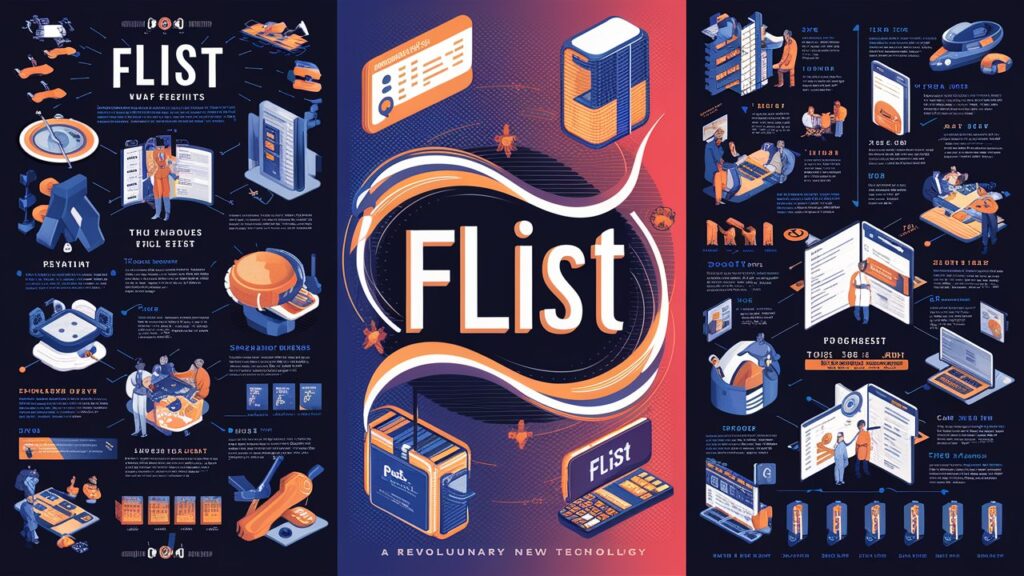Introduction
In today’s fast-paced digital landscape, tools and frameworks that streamline workflows, enhance collaboration, and simplify complex processes are in high demand. One such concept gaining traction is “Flist“—a versatile system designed to organize tasks, manage data, and optimize productivity. Whether you’re a project manager, developer, or business leader, understanding Flist can revolutionize how you approach problem-solving. This article dives deep into the core components of Flist, its practical applications, and answers common questions to help you harness its full potential.
1. What Is Flist? Defining the Framework
Flist (short for “Functional List”) is a structured methodology or toolset that combines task management, data organization, and automation. At its core, Flist operates as a dynamic list-based system that prioritizes flexibility and scalability. Unlike traditional to-do lists, Flist integrates contextual tagging, dependency mapping, and real-time collaboration features. It is often used in software development, project management, and even personal productivity apps to break down complex workflows into manageable, interconnected tasks. By categorizing items into nested lists with customizable metadata, Flist ensures clarity and adaptability in both individual and team settings.
2. Key Features of Flist: Breaking Down the Components
The power of Flist lies in its robust feature set. Hierarchical structuring allows users to create parent and child tasks, enabling granular control over projects. Tagging and filtering functionalities let teams assign labels like “urgent,” “in-progress,” or “client-facing” to items, making it easier to sort and prioritize. Dependency tracking ensures tasks are completed in the correct sequence, preventing bottlenecks. Additionally, cross-platform synchronization ensures that updates made on one device reflect instantly across all others, fostering seamless collaboration. Finally, analytics dashboards provide insights into task completion rates, team performance, and resource allocation, empowering data-driven decision-making.
3. Benefits of Adopting Flist in Your Workflow
Implementing Flist offers transformative advantages. For teams, it reduces miscommunication by centralizing tasks and deadlines in a single interface. The transparency of dependency tracking minimizes delays caused by overlooked prerequisites. On an individual level, Flist’s adaptive prioritization helps users focus on high-impact tasks while automating routine updates. Organizations benefit from scalability—Flist can expand to accommodate growing projects without sacrificing performance. Case studies show that companies using Flist report a 20–30% increase in project delivery speed and a noticeable reduction in administrative overhead.

4. How to Implement Flist: A Step-by-Step Guide
Successfully integrating Flist requires strategic planning. Start by auditing existing workflows to identify pain points, such as disjointed communication or inefficient task delegation. Next, customize your Flist template to align with your team’s needs—for example, adding custom tags for client names or project phases. Train stakeholders on core features like dependency mapping and real-time editing to ensure buy-in. During the pilot phase, test Flist on a small project to gather feedback and refine processes. Finally, roll it out organization-wide, using analytics to monitor adoption rates and adjust workflows as needed.
5. Challenges and Solutions in Flist Adoption
While Flist offers numerous benefits, adoption isn’t without hurdles. Resistance to change is common, especially in teams accustomed to legacy systems. Address this by highlighting quick wins, such as reduced meeting times or faster task completion. Data overload can occur if users create overly complex lists; combat this by enforcing naming conventions and periodic cleanups. Technical challenges like integration with existing tools (e.g., Slack, Jira) may arise, but most Flist platforms offer APIs or pre-built connectors to streamline compatibility.
6. The Future of Flist: Trends and Innovations
As AI and machine learning advance, Flist is poised to become even more intelligent. Predictive analytics could automate task prioritization based on historical data, while natural language processing (NLP) might enable voice-activated list management. The rise of remote work will drive demand for enhanced collaboration features, such as virtual whiteboards embedded within Flist interfaces. Additionally, industries like healthcare and education are exploring niche applications, such as patient care coordination or lesson planning, signaling Flist’s potential to transcend traditional use cases.
Conclusion
Flist represents more than just a productivity tool—it’s a paradigm shift in how we organize and execute tasks. By combining structure with flexibility, it addresses the complexities of modern workflows while fostering collaboration and efficiency. Whether you’re managing a startup or overseeing large-scale operations, embracing Flist can unlock new levels of productivity. As technology evolves, so too will Flist, cementing its role as an indispensable asset in the digital age.
Frequently Asked Questions (FAQs)
Q1: Is Flist suitable for small teams or solo users?
Absolutely. Flist’s scalability makes it ideal for both individuals and small teams. Solo users can leverage its tagging and prioritization features to manage personal goals, while teams benefit from shared workspaces and real-time updates.
Q2: How does Flist differ from traditional project management tools?
Unlike rigid tools like Gantt charts, Flist emphasizes adaptability. Its nested lists and dynamic tagging allow for rapid adjustments, whereas dependency tracking and analytics provide depth without sacrificing simplicity.
Q3: Can Flist integrate with other software?
Yes. Most Flist platforms support integrations with popular tools like Slack, Trello, and Microsoft Teams via APIs, ensuring seamless workflow continuity.
Q4: What industries benefit most from Flist?
While tech and project management are primary adopters, industries like marketing, healthcare, and education are increasingly using Flist for campaign tracking, patient management, and curriculum planning.
Q5: How do I avoid overwhelming my team with Flist’s complexity?
Start with a simplified version of Flist, focusing on core features like task lists and basic tagging. Gradually introduce advanced functionalities as your team becomes comfortable.
Q6: Is Flist secure for sensitive data?
Reputable Flist providers offer encryption, role-based access controls, and compliance certifications (e.g., GDPR), ensuring data security for sensitive projects.
This structured yet flexible approach ensures Flist adapts to your needs—today and tomorrow.
